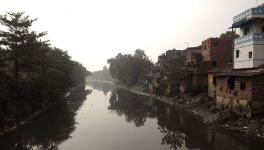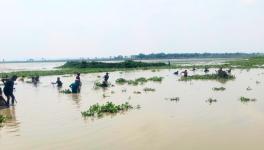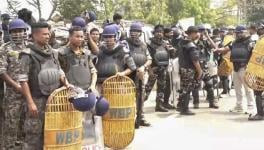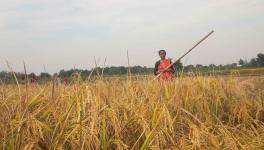Ramsar Wetland Site in East Kolkata in Danger; Kolkata Corp Project Set to Displace Locals
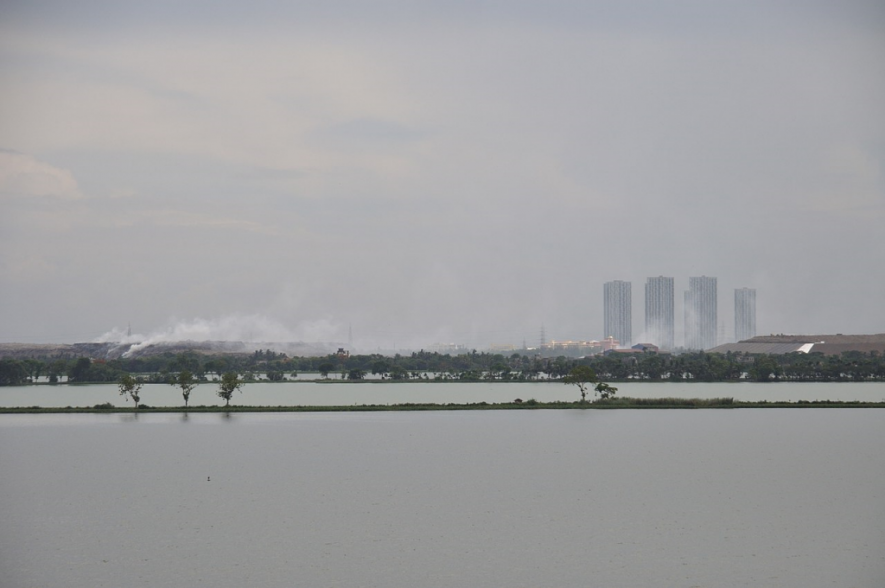
Image Courtesy: Down To Earth
The 120 square kilometre of East Kolkata Wetlands, part of the International Ramsar Convention, are being filled up slowly but steadily at the “behest of land sharks” in West Bengal, say local residents, alleging that some of them owe allegiance to ruling Trinamool Congress leaders in the Bhangar Assembly constituency.
For the past 300 years, the Ramsar Wetland Site has provided a vital service in receiving and treating waste water from Kolkata. Each day, the wetlands receive some 1,000 million litres of sewage, which passes through a series of canals, fish ponds and agricultural (mainly paddy) fields that make up the East Kolkata Wetlands, before getting discharged into the Bay of Bengal after three to four weeks.
This natural waste water treatment system developed by the local community with their traditional wisdom saves the city the cost of having to build and maintain a conventional treatment plant. In addition, the wetland also provides livelihood for around 25,000 families of fishermen, and produces over 10,000 tonnes of fish per year for the people of Kolkata as well as rice and vegetables.
With the growth of the Kolkata city over the past couple of decades, however, there has been increasing pressure on the wetland due to urban encroachment, demand for land and improvement of the existing garbage dumping site on the edge of the East Kolkata Wetlands. Moreover, there are concerns over the quantity and quality of raw sewage needed to support the fishponds in the natural waste water ecosystem.
Now, as the Kolkata Municipal Corporation is trying to build a mastic asphalt plant by acquiring land, pisciculturists of Bhangar, operating in the Ramsar site, are being dislodged from the area.
The East Kolkata Wetlands start from the right hand side of EM Bypass and the land near it is traded at an abnormally high price.
A portion of agricultural land near the Ramsar site is also being taken over at Hajia Mouja of Bamanghata in Bhangar block no. 2. When corporation officials came in to survey the land, pisciculturalists and agriculturalists had a tussle with them and a large police contingent had to step in to “rescue” Kolkata corporation officials, said some local residents.
They said if the Kolkata corporation themselves flout the guideline regarding nil construction at the Ramsar site, then the local land mafia will be emboldened. They have also formed a committee called Sahebbheri Krishi Bachao Committee to save their land around Sahebbheri, which falls within the Ramsar wetland site.
In a rally recently organised by the committee, those who would potentially lose their land, walked and depicted their stories of yesteryear. It was in 1967 that the land was given to residents of the area and all share-croppers for cultivation. This was when the first United Front government was ruling. Now, the Kolkata corporation themselves is being accused of trying to derail the environmental aspect of Sahebbheri -- a 27-bigha land which has completely turned into agriculrual land.
About 40% of the 120 sq km wetland in East Kolkata has already seen a change in land characteristics. Massive illegal construction is reportedly going on. The All India Agricultural Workers Union (AIAAWU) state president Tushar Ghosh, who is Bhangar resident, said 35 families would be evicted and the homes of over 100 persons would be at stake if the Kolkata corporation stuck to its original plan. He said the government had not once spoken to farmers tilling the lands there for over 50 years.
Interestingly, not only Ramsar site, but also closed water mass or ponds in Kolkata have been erased drastically in the last 10 years. According to media reports, there were 7,200 ponds in Kolkata in 2005, while in 2017, the number fell to 3,800. Now, after so many water bodies have been filled, the TMC-run board has constructed a new cell to oversee the water bodies.
However, environmental activists have been complaining that the state government’s efforts have been too little too late as the cell has barely come to the rescue of water bodies.
Get the latest reports & analysis with people's perspective on Protests, movements & deep analytical videos, discussions of the current affairs in your Telegram app. Subscribe to NewsClick's Telegram channel & get Real-Time updates on stories, as they get published on our website.









